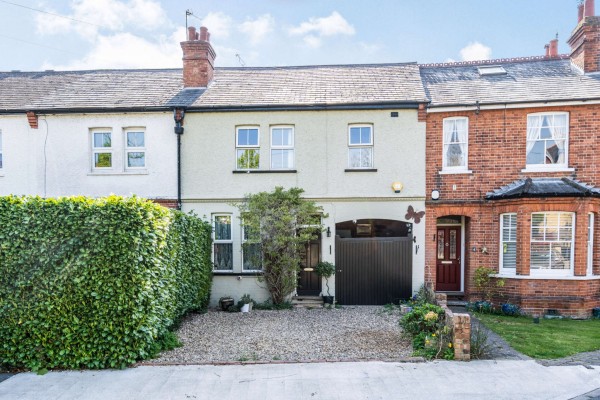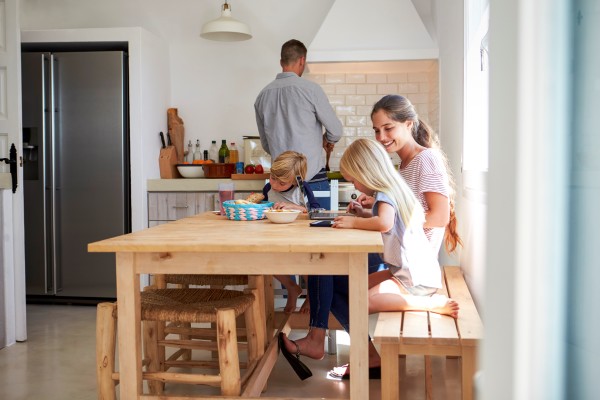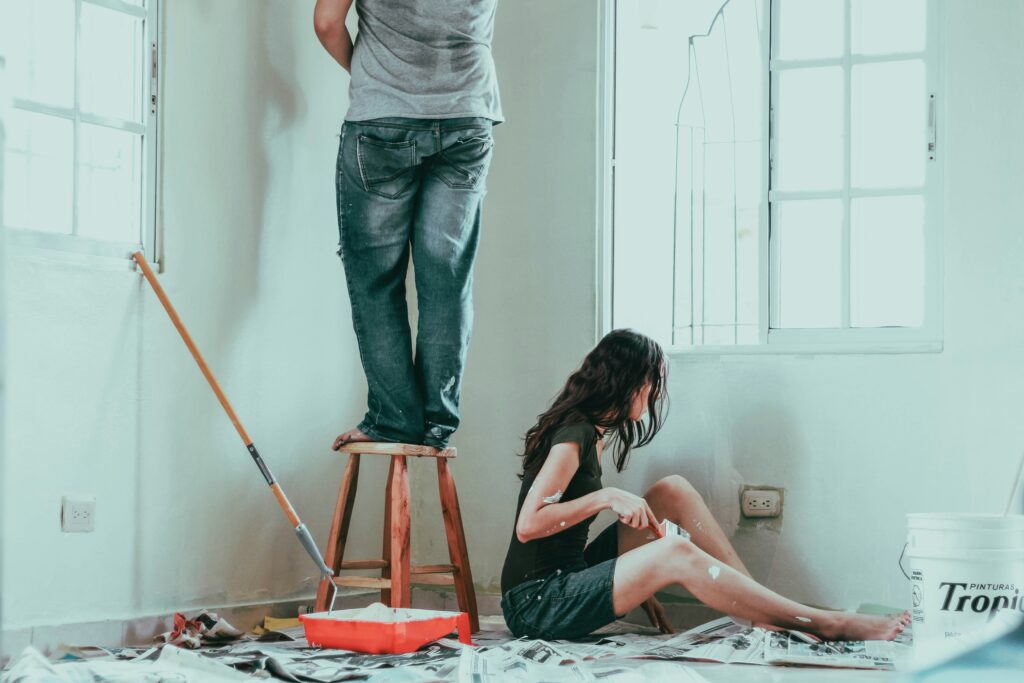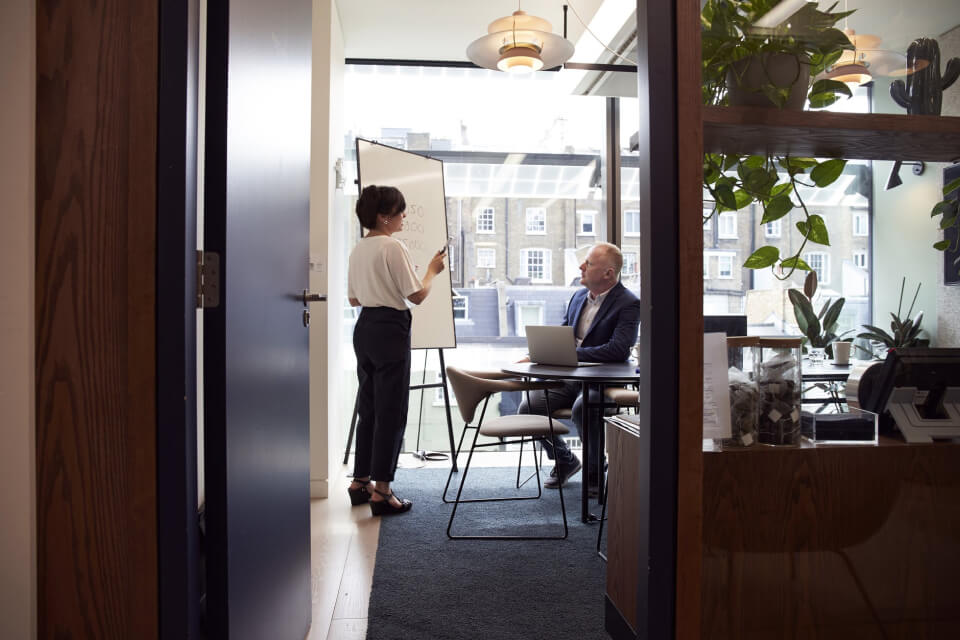Which improvements add the most value to your home?
-
A loft conversion, off-street parking and a kitchen redesign are thought to add the most value to a home
-
Check your home’s current value so you can understand which improvements will get the best return on investment
-
Research local house prices to see what buyers will pay more for in a house like yours
There are lots of different opinions as to which improvements will add value to your home.
It’s thought a loft conversion can add 15% to your home’s value. Off-street car parking, a kitchen redesign and a garage conversion can have a similar effect.
But what improves the value of someone else’s home might not do the same for yours.
The best renovation to add value totally depends on your property, the local market and your potential buyers.
When you know what your future buyers are looking for, you can choose home improvements that add value.
Before we dive into value-adding improvements, you need to know your starting point.
It’ll help you work out the value you’ll add against the cost of the work, so you can figure out if it’s worth it.
Improvements and renovations to add value to your home
Let’s go through renovations that will add value to your home, which properties they’re best suited to and what you can expect to pay for the work.
1. A loft conversion

It’s thought that creating an additional room in the loft increases the sale price of the typical home by up to 15%. It could be more if you add an extra bathroom too.
It’s particularly worthwhile for homes in the city, where floorspace is limited. In June 2022, Barbour ABI found that urban homeowners are much more likely to renovate loft space than rural livers.
If you live in a more rural location or have more space, it may be better to extend outwards rather than upwards.
You can make some changes to your loft space without planning permission, which will be more cost-effective. This includes converting up to 50 cubic metres of loft space.
If your plans exceed certain limits and conditions, you’ll need planning permission. This includes extending or altering the structure of the roof space.
The average cost of a loft conversion comes in at a hefty £22,000.
Home improvements that don’t need planning permission
2. Off-street parking

It’s estimated that off-street parking could add a whopping £50,000 to your home’s value.
Estate agents say it can make or break a sale, and that this home improvement does well across the market.
It’ll have the biggest impact in prime city locations, but suburban and rural buyers also see off-street parking as a must-have.
The cost of converting a garden to a parking space can vary from a few thousand to more than £15,000.
It depends on the cost of dropping the kerb, reinforcing the pavement, and adapting the garden.
Even if you don’t drive, it can be a worthwhile conversion. Lots of people are making money from renting out their spare car parking space.
Turning your front garden into a parking space
3. A new kitchen

A new kitchen is a great way to improve your home, but you need to go big to add value.
Simply replacing units and cabinets can cost you more than you’ll gain.
A lot of buyers look for a kitchen where you can sit down and eat – particularly if your home’s suited to families. So minor updates to a galley kitchen won’t have a huge impact.
To add the most value to an outdated or small kitchen, you’ll need to create a great lay-out. This might mean extending the space.
For a full kitchen redesign, you’re looking at a cost of about £45,000, but it’s thought to add 15% to the value of your home.
4. A garage conversion

It’s estimated that a garage conversion could add up to 15% value to your property.
It’s a great way to add extra floor space to your home without extending.
However, you need to weigh up whether future buyers will value a garage over an extra room.
In a city, where parking is difficult or costly, a garage can get you a premium price.
Similarly, rural buyers might find a garage useful – particularly if your home is already spacious.
But you could create a valuable extra bedroom, a granny flat or a home office. You might even consider an extra income flow with an Airbnb rental.
It’s affordable in comparison to some other conversions, and most of the time you won’t need planning permission.
A standard garage conversion costs between £5,000 and £7,000.
You’ll need to make sure you comply with building regulations, which involves paying for someone to inspect your conversion.
5. A cellar or basement conversion

Creating a basement is thought to add 10% to 15% to the value of your home, but it’ll do more for some properties than others.
It’s a bit like a loft conversion: buyers might wonder why you dug down rather than extended outwards, if you have the space.
That means a basement conversion is usually the best choice for urban properties, terraces, and homes without the ability to extend.
Barbour ABI found that more than 90% of basement works are done in urban boroughs in 2022.
It’s also a good choice for older homes, where buyers will feel that a basement or cellar fits with the period it was built in.
Keep in mind that building a basement won’t come cheap – it can be up to twice as expensive as converting a loft.
6. Open plan living space

Open plan living space is one trend that’s not going away any time soon. It’s thought to add 3 to 5% to the value of your home.
Creating large multi-functional spaces is great for family living and entertaining.
It brings people together and can be great for parents to keep an eye on young kids.
However, open-plan spaces are more expensive to heat and keep warm. With lots of people worried about the rising cost of living, it’s worth considering if that could put buyers off.
It’s relatively straightforward to create an open plan living space by knocking through a wall.
But it can be more expensive (and sometimes not possible) if it’s a load-bearing wall.
7. A new bathroom

A new bathroom will add value to your property – and you don’t have to spend a fortune.
But to add value with a new bathroom, the rest of the house needs to be in good shape.
Changing the layout of your bathroom and changing pipes and plumbing can be expensive.
But simply replacing the sink and toilet or bath and shower could have a big impact without breaking the bank.
Retiling is a fairly straightforward DIY job, and new lighting and a vanity unit can also transform the look of your bathroom.
Doing up your bathroom is predicated to add 3% to 5% to a home’s value.
See what similar properties are selling for
Check out local house prices to understand what appeals to buyers in your market.
You’ll get a feel for the features people want in a home like yours, and what they’re willing to pay for them.
Most of our house price records also have historic photos, so you can see what difference any improvements have made.
What are the most popular home improvements?
The most popular home improvements aren’t necessarily the ones that will add the most value.
A survey by mortgage lender Halifax found that homeowners were most likely to have installed a new bathroom at 38%.
We’re also likely to get a new kitchen or a new boiler, both at 34%.
Other popular improvements include replacing windows (29%) and landscaping the garden (27%).
21% of homeowners have repaired or replaced the roof, and 15% of us have installed a new heating system.
Why are homeowners carrying out home improvements?
A study for the Post Office Money revealed the motivations behind home improvements.
It found that 28% of people improve their home because they think it’s a good investment and will add value.
A further 5% of homeowners carried out improvements because they planned to move in the near future.
But 40% said it was to create a cosier living space and 23% said it was to increase their home’s energy efficiency.
With lots of people opting for home improvements that don’t necessarily add the most value, it suggests we’re renovating with a view to living, rather than selling.
A combination of the costs involved in moving, such as stamp duty and estate agent fees, as well as a recent shortage of homes for sale, has led many people to focus on upgrading their current home.
Do your sums before you get started
If you’re keen to improve the value of your home, make sure you’ve done your sums before you start any work.
While renovations and conversions can definitely add value to your home, there’s no guarantee.
You’ll need to understand the local market and what buyers want from a home like yours. Speak to local agents and get a valuation, even if you’re not thinking of selling.
They’ll be able to give the best estimate as to what your home’s worth right now and which improvements are most likely to add value.
Renovations Ranked by Return when Selling
The return has been calculated by considering the estimated value added to the house of the renovation compared to the average cost to complete the renovation.
| Renovation Type | Average Cost | % value added to house | £ Value added to house* | Original | Total | Return | Increase on rental rates for holiday home owners |
| Kitchen remodel | £15,000 | 10% | £25,000 | £250,000 | £275,000 | +67% | 12% |
| Bathroom remodel | £6,000 | 4% | £10,000 | £250,000 | £260,000 | +67% | 11% |
| Smart home tech (lighting, heating) | £10,000 | 6% | £15,000 | £250,000 | £265,000 | +50% | 10% |
| Landscaping & outdoor maintenance | £5,000 | 3% | £7,500 | £250,000 | £257,500 | +50% | 8% |
| Eco-Friendly Home Improvements (solar panels, insulation, appliances) | £14,000 | 8% | £20,000 | £250,000 | £270,000 | +43% | 4% |
| Single garage | £13,000 | 7% | £17,500 | £250,000 | £267,500 | +35% | 4% |
| Conservatory | £18,000 | 9% | £22,500 | £250,000 | £272,500 | +25% | 4% |
| Loft Conversion (including roofing, en-suite bedroom) | £35,000 | 16% | £40,000 | £250,000 | £290,000 | +14% | 22% |
| Double storey extension (added bedroom) | £37,500 | 15% | £37,500 | £250,000 | £287,500 | 0% | 19% |
| Decorating (flooring, painting – whole house) | £8,000 | 3% | £7,500 | £250,000 | £257,500 | -6% | 8% |
| Single storey extension | £30,000 | 11% | £27,500 | £250,000 | £277,500 | -8% | 7% |
* Based on a £250,000 3 bedroom property
Kitchen Renovation
Kitchen renovations are popular home upgrades as they’re excellent value for money and tend to pay off in the long run, particularly if you’re replacing outdated appliances that may be wasting money. A minor kitchen upgrade, such as changing cabinet doors, might only add 2-3% to the value of your home as it would likely be considered decorating, but a full overhaul with new appliances, tiling and worktops could add up to 10% to the value of your home – this equals around £25,000 on a £250,000 home, a fantastic ROI considering most kitchen renovations cost between £10,000 and £15,000.
For holiday home owners, a fresh and modern kitchen will persuade guests that they’re getting good value for their money, particularly in the current times when they’re less likely to leave home to dine out. The increase for rental prices could be up to 12%, meaning it comes out third, just below adding additional bedrooms to your property.
Bathroom Renovation
A bathroom renovation is a popular home upgrade, and has a great return on investment, particularly if your bathroom furniture is old and outdated or damaged in some way, adding up to 4% to the value of your home and with a return of 67%. Bathroom remodels are also very desirable in holiday lets though, adding up to 11% to the rental value, thanks to guests looking for spa-like escapes.
Loft Conversion
Loft conversions aren’t often the most popular home renovation, but are clearly pretty lucrative both for selling your home and for renting it out. There’s no need to sacrifice precious outdoor space as you would need to for an extension, but you can gain valuable space indoors that can be used as bedrooms, bathrooms and even work spaces.
The return looks small compared to others, but converting your loft by adding another bedroom and an en-suite bathroom can bump up the value of a £250,000 home by around 16%, taking it to a selling price of just shy of £300,000. With the average price paid for a loft conversion, including any maintenance to the roof, being between £30,000 to £35,000, homeowners often get back what they paid and more, particularly if they spend cleverly.
Conservatory
Conservatory additions to homes are one of the most popular home upgrades as they are excellent value for money. “Off the shelf” conservatories tend to come as a package rate (which can vary hugely) and can add considerable living space for homes for a good price, sometimes even at £10,000 or less. Considering the value of up to £22,500 this could add when selling your home, the return can be very good.
While adding a conservatory is a good home upgrade for those looking to live in their home or sell in the near future, they don’t add a huge amount of value for holiday home owners as the additional living space is not as desirable as sleeping space. This brings it far lower down on the list for holiday home rental value, only adding 4% to your potential rental rate.
Eco-Friendly Upgrades
For the purpose of this research, we considered adding double glazed windows, a new composite front door and upgrading old appliances to eco-friendly alternatives. We know already that people are more aware about their impact on the environment and are choosing sustainability where they can, meaning that homes and holiday cottages that have made steps in this direction are generally more desirable. In addition to this, the long term returns on upgrades such as new boilers, energy efficient lighting and are excellent, meaning the value goes far beyond simply the monetary outcome of selling or renting your property.
When selling your home, new eco-friendly upgrades, particularly new windows and doors, can add a huge amount of value to your home – up to £20,000 on a £250,000 house. For a holiday home, rental value will increase but usually only with the availability of modern appliances, meaning the rate you can charge might only increase by 4%.
Single Garage
Garages are desirable as storage space nowadays, particularly in new build homes where built in storage is scarce. In holiday homes, they also offer the added bonus of safe off-street parking and storage. When selling a property, a single garage might add up to 7% onto the value of your home giving a good return of 35%; if renting the property as a holiday let, a single garage might give you the opportunity to charge up to 4% more.
Smart Home Tech
Once a thing of the future, smart home tech such as smart lighting, heating and security are now a desirable feature in properties. This sort of technology is often fairly expensive at the outset, including installation costs, estimated at £10,000 here, but may be worth it in the long term, particularly for holiday cottages who can offer luxury features to guests and charge up to 10% more. When selling your home, you’d need to make a decision as to which tech is staying and which is coming with you, meaning that, while it may raise your house price by up to £15,000, it might also cause it to drop in value too if you remove the tech and leave new owners having to source their own.
Landscaping
Landscaping your garden and bringing outdoor spaces up to scratch isn’t something that many think of when selling a home, but gardens are particularly sought after at the moment meaning that ones that need little work will increase the value of your property by up to 3%, or £10,000 on the average 3 bedroom home. The return on this depends on how much you spend on the work, financially and timewise – many think it worth it to spend their time and effort in the garden as it often simply means a bit of grafting outdoors, but if you spend close to the average of £5,000, you can get good returns of around 50%.
Landscaping and outdoor work may make a holiday home more desirable in photos, which generally leads to more bookings for holiday home owners and thus an increase in price. You may be able to charge up to 8% if you keep the outdoor space looking neat and tidy.
Decorating
Decorating is a DIY home owners’ favourite job as it’s usually the cheapest and can be done without the need for external help. That being said, painting and decorating generally only adds up to 3% to the value of a home, around £7,500, unless the property has been left in a dire state. Decorating a whole house might lose you money in the long run of up to 6% as costs can quickly rack up for supplies, and there’s a limit on how much
Similarly to landscaping, decorating can help increase the curb appeal of holiday homes as guests often skim quickly through photos and a good lick of paint and new accessories will do a world of wonders for these, increasing rates by up to 8%.
Double/Single Storey Extension
It’s not surprising that double and single storey extensions are ranked next by how much value they add to your home, considering the massive increase of additional space they can provide. A double storey extension gives the option of additional bedroom space upstairs in addition to downstairs living space, so adds considerably more value to a home – 15% compared to 11%, which is a difference of £10,000. The return on a double storey extension is likely to only just break even if you’re selling your home due to the high cost of building and designing it, however the benefits for living in the home are greatly increased, particularly if it’s for a growing family. A single storey extension alone may even lose you money on your investment, but if including a kitchen remodel as part of the renovation, as is popular, the return value rockets.
Any extension, whether that’s a loft conversion or double storey, that adds bedroom space is always going to be lucrative for holiday home owners, meaning you’re able to charge as much as 22% more for guests staying in your property.
10 quick fixes for adding value before selling
1. REDECORATE
Redecorating is the most popular home improvement and adding a lick of paint can be done at a relatively low cost. Neutral colours are most appealing to house buyers and can go a long way to giving your home a new lease of life, so do not be afraid to pick up the paintbrush.
2. FIX SUPERFICIAL DEFECTS
While unlikely to be the clinching factor in a house sale, small problems and defects can create an impression of a house being run down or not well cared for. Bigger issues (like damp) should not be covered up as they will show on a survey and come back to haunt you later on.
Things to look out for include:
- peeling paint
- dirty walls, especially near door frames and light switches
- dripping taps
- squeaky floors, doors or stairs
- mouldy sealant in kitchens or bathrooms
- limescale build-up on kitchen and bathroom fittings
- badly fitted laminate flooring
- broken lightbulbs
3. THE FRONT DOOR
First impressions count and the front door of your home can say a lot about the rest of the house to first-time viewers. If you cannot afford to replace the door, make sure it looks new by giving it a power wash or fresh coat of paint. Even a new doorknob, house number or name plaque can help. Try to make your front door look smarter than your neighbours’ to help your property stand out.
4. DECLUTTER
Never underestimate a tidy, clean room and pay special attention to high-impact rooms such as the kitchen and bathroom. You should also consider whether there’s too much furniture in each room as it can make the property feel smaller.
5. HEATING AND LIGHTING
If you’re not at home, preset the heating to come on ahead of a scheduled viewing. Potential buyers will want to know that your central heating works well and feel comfortable in your home if it’s cold outside. Good lighting will also be essential on a drab day so having lamps on in dark corners will help. It’s better for the viewing to take place in daylight but if a potential buyer is coming after dark then turn any outside lights on.
6. GARDEN APPEAL
If you have a front garden, spend a little time sprucing it up. A few plant pots and a clear pathway can make the front of your house more appealing helping with the first impressions.
Out the back a well-designed garden can add a great deal of value, it should feel like an extra space for entertaining or relaxing, rather than an expanse of grass. It’s essential to trim borders, clear pathways and cut back any overgrown trees or bushes, particularly if they block direct sunlight into the property.
An area of decking creates a sense of bigger usable living space and three per cent of homes sold in 2019 were even found to have a summerhouse in the garden, giving owners more space to relax and entertain in the brighter weather.
7. CREATE A DRIVEWAY / OFF-ROAD PARKING
In some areas of the country, the ability to park close to your front door comes at a huge premium and therefore, if you have the room to add off-street parking, you are sure to increase value.
8. LOOK SMART AND BE ENERGY EFFICIENT
Smart home technologies are increasingly important to buyers – just advertising the presence of fibre optic cables in your area could be enough to encourage buyers. Statement systems like multi-room music platforms can also make a difference.
Double glazing will also help retain heat (and keep noise out). Smart technology such as Hive, which gives mobile control over heating systems, is a feature worth considering. If a home improvement moves your Energy Performance Certificate (EPC) up a band could add thousands to the sale price!
9. MAKEOVER THE KITCHEN
Kitchens are often the main focus for many buyers, it may be the first thing they look to replace or pay more for if a property has one they like. You may not be able to afford a whole new kitchen but, for a relatively small budget, painting units or replacing cupboard handles or doors are great alternatives. Good lighting and clutter-free, clean surfaces will also make a big difference.
10. FRESH BATHROOMS
In the bathroom, re-grouting, eliminating all limescale and replacing taps are good options. Bathrooms need to look fresh and hygienic, so paint the walls a neutral shade and ideally add a new shower curtain or a standard glass screen. In 2019, new bathrooms were fitted in 29 per cent of homes which sold that year so could be the key to selling fast and earning more.
Bigger projects which add value to your home
Big projects like loft conversions, adding a conservatory or converting a garage are big projects with big rewards. In fact, 22 per cent of homes sold in 2019 had an extension added; increasing a property’s value and making them more appealing to buyers. In some areas of the country, the ability to park close to your front door comes at a huge premium. You are sure to increase the value if you have the room to add off-street parking.
If you can’t afford an extension or conversion, it might be worth obtaining planning permission to do so at a later date. You would have to spend money on drawing up the designs and getting a survey, but it would remove a big element of doubt from a potential buyer’s mind if they know the council has already approved an extension.
What to avoid:
SWIMMING POOLS
Swimming pools are not generally considered an attractive house feature in the UK. They’re expensive to maintain, use up a lot of space and the UK weather plays a part meaning that for a lot of people they are more fuss than what they’re worth and can deter potential buyers. If your property has an outside swimming pool, especially one that is run down, you might want to consider filling it in.
THE DANGERS OF JAPANESE KNOTWEED
Japanese Knotweed can jeopardise the sale of a property. You will need to evaluate your options are if you believe it exists on your property.
PLANNING PERMISSION AND BUILDING REGULATIONS
If you have had any work carried out such as extensions or conversions, make sure you obtained the appropriate planning permission and building regulations and have the relevant documents. If you haven’t, you may find that you must pay for them retrospectively before a sale can be agreed.



